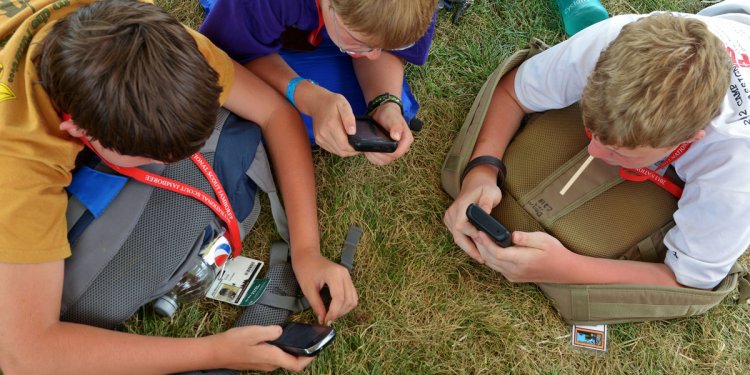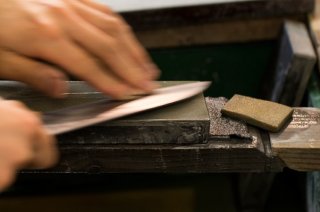
Boy Scout California whittling knife
 AT SUMMER CAMP, your Scouts are doing a pioneering project. They’re proud of their smooth, tight lashings. A boy tries to cut a length of cord, sawing at it without success. Smiling, you hand him your knife and say, “Try this!” In a flash, the cord is cut. The boy looks at you with wondering eyes and says, “How’d ya get it so sharp?”
AT SUMMER CAMP, your Scouts are doing a pioneering project. They’re proud of their smooth, tight lashings. A boy tries to cut a length of cord, sawing at it without success. Smiling, you hand him your knife and say, “Try this!” In a flash, the cord is cut. The boy looks at you with wondering eyes and says, “How’d ya get it so sharp?”
It’s easy to sharpen a knife. All you need is a whetstone and practice. The method described here works with any nonserrated blade.
First, Some Rules
- Electric and mechanical sharpeners produce an acceptable working edge but not a wickedly sharp one. Instead, use a whetstone.
- Don’t use a grindstone on a knife; it will destroy the edge and the temper.
- If you have a dull knife, begin sharpening with a coarse-grit, natural (carborundum, aluminum oxide, Washita) or diamond stone. Change to a medium-grit stone when the nicks are gone and the edge is smooth. If you keep your knife reasonably sharp, all you’ll need is a medium-grit stone.
- Maintain a thin film of cutting oil, kerosene, or WD-40 (my preference) on natural stones — or water on diamond stones — to float away steel particles that clog the pores of the stone and reduce its cutting efficiency. Do not use automotive or gun oils. After every few dozen strokes, dry the stone and blade and apply new oil. You’ll go through a lot of oil this way, but you won’t dull the edge by grinding metal particles into it. Frequent cleaning is essential if you want a super-sharp edge.
- Sharpening will go easier if you dip the cold blade into boiling water for a few seconds before beginning to sharpen it.
Sharpening Procedure
Keep the back of the blade raised about 15 degrees and cut into the stone (see the chalkboard sketch at left). If you have an official Boy Scout or Swiss Army knife, you can approximate the correct angle if you rest the back edge of the blade on two stacked pennies. Another trick is to set the blade flat on the stone and adjust a bright light directly overhead. Slowly raise the back of the blade until you can just see a shadow.
You can even buy special tools that clamp to a knife blade and maintain the recommended sharpening angle. These tools work well on the body of the blade but not on a sharply curved tip. Learn to hold the right angle by hand (it just takes practice), and you’ll never need a clamp.
Take about six strokes on one side of the stone, then turn the blade over and repeat the process. Keep the stone lubricated with honing fluid. If you want a razor’s edge, switch to a fine-grit stone (natural or diamond).

















